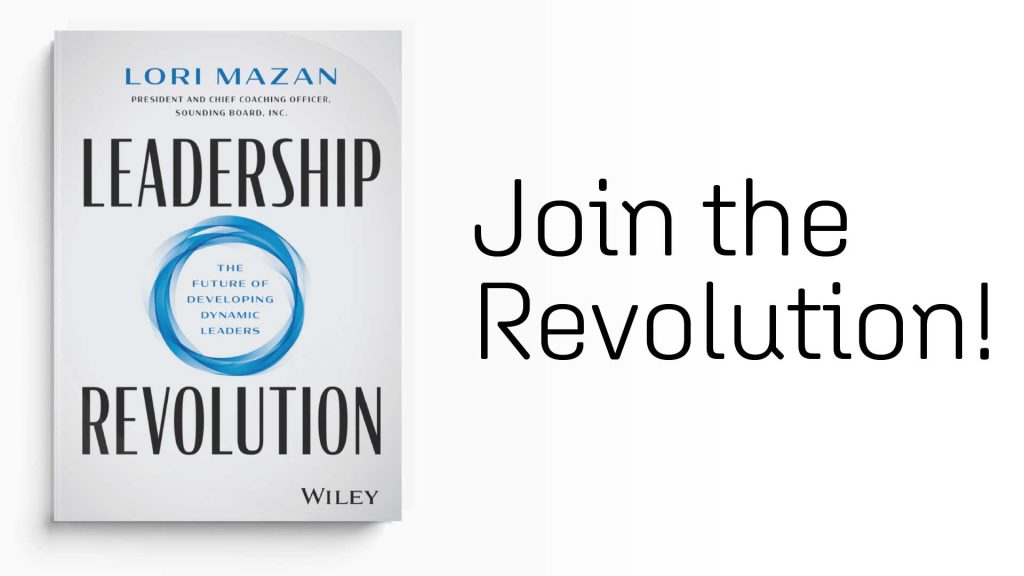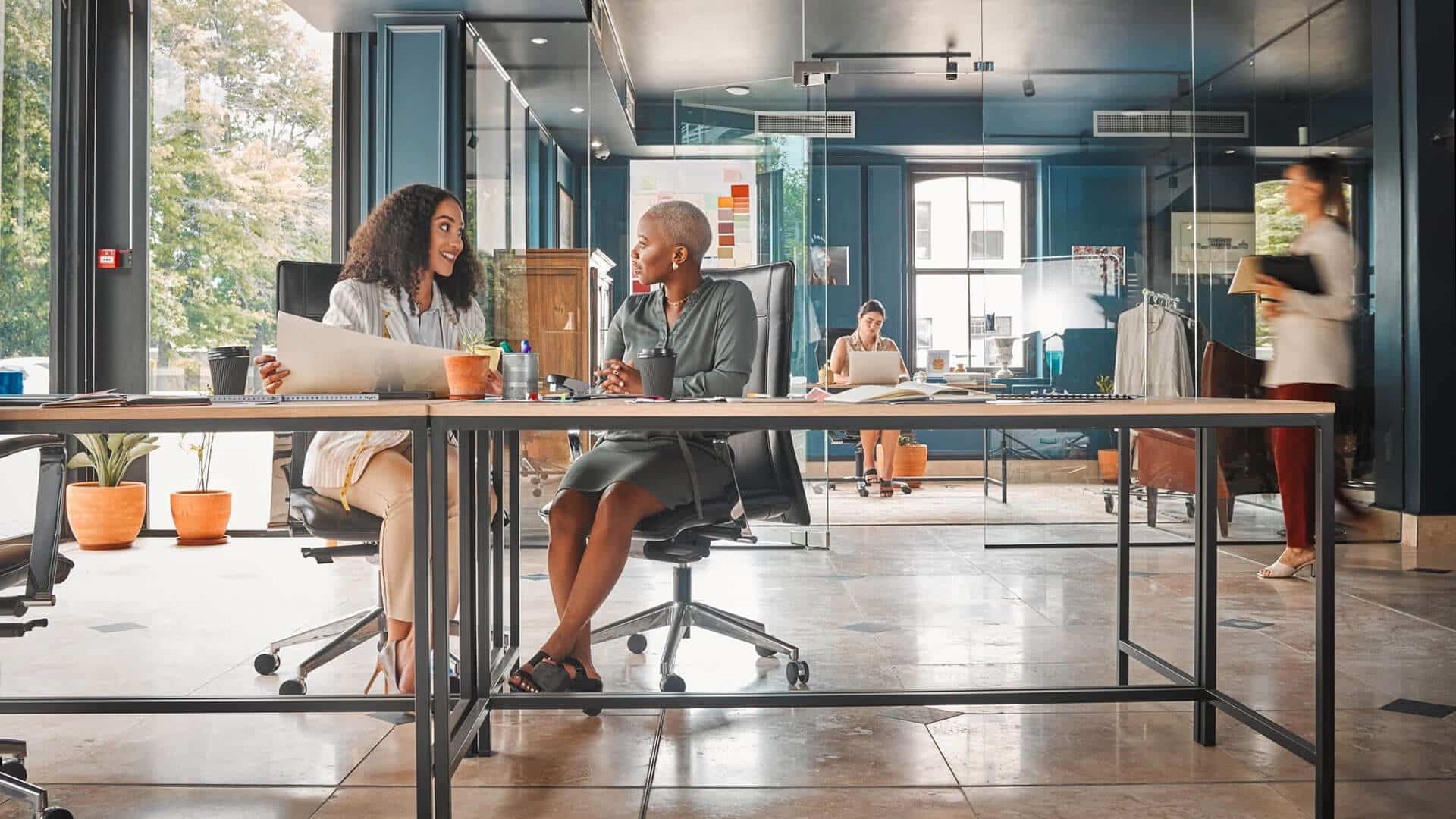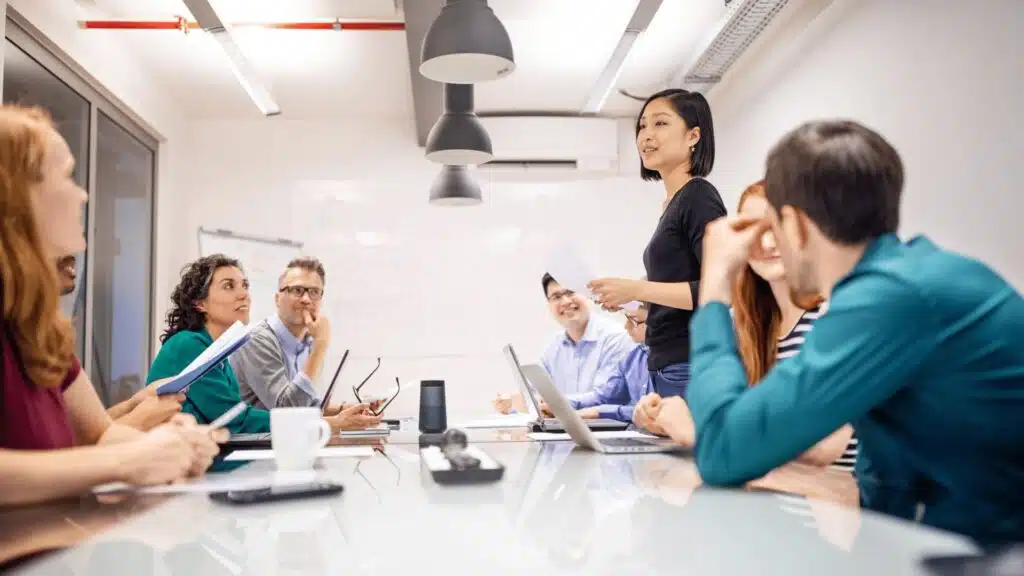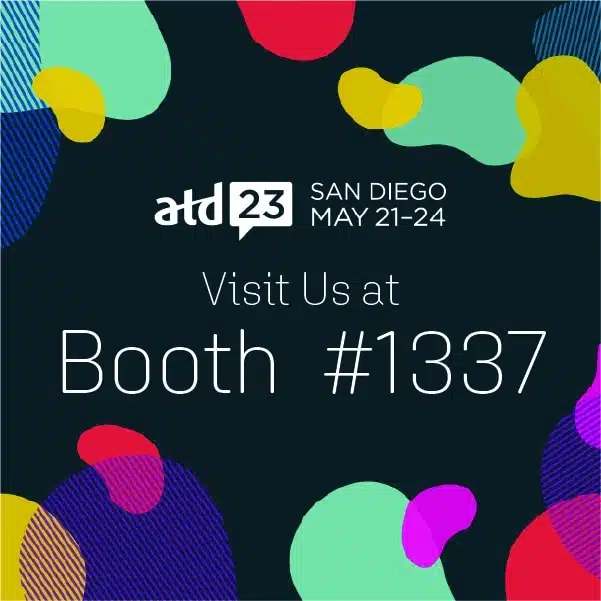Over the years, I’ve followed the work of my close peer, Lan Tran, Director of Learning Design and Technology at McDonald’s. She and her team are dedicated to human-first design and creating personalized learning experiences for corporate and restaurant staff.
Human-centric design has been a constant in everything we do here at Sounding Board, from our culture to our Leader Development Platform and coaching services. But you can always learn more, so a while back, I pinged Lan to learn her strategies on how we could create better leaders and coaches.
But first, a little background on my friend.
What drives human-first design leadership coaching?

Lan’s human-first design perspective was formed long before she joined McDonald’s, starting with challenges she encountered as a refugee child immigrating to the U.S. from Vietnam in 1979. Growing up in a western culture, she faced many conflicts with people who told her she couldn’t do things because of her gender, race, or age. Some even said her name sounded too ethnic. “How about you change your name to something easier to say, more Americanized? It’ll help you get further faster,” she recalled.
Lan kept her name. But as she described her experiences, I saw many similarities to my upbringing immigrating from Taiwan at age two. My birth name also brought on quite a bit of ridicule, and by age nine, I changed it to Christine.
While picking my name may sound interesting, I was only trying to fit in as a young immigrant girl. Lan and I shared a similar experience, a feeling of otherness that neither of us wants anyone else to experience. Years later, this overarching theme prompted her to design human-first learning experiences at scale and to support her teams in their career paths. When you join Lan’s team, you are more than your role. She wants to help you live your best life.
What is human-centric learning?
Lan believes human-centric learning starts with getting to know end-users through feedback and by isolating the root of their struggles. At McDonald’s, she creates learning experiences that influence behavior change by placing individual learners in scenarios that give them practice with applying the key skills within the context of their jobs, including the areas of struggle (e.g., what makes their job hard).
She and her team design learning for the end user, and individual learners have different needs and experiences. Essentially, designing for the masses won’t meet everyone’s needs; it’s ineffective. You have to define your target audience. “When you create something for everyone, you sometimes end up creating something for no one,” she explained.
Instead, Lan strongly advocates using a mix of focus groups, prototype labs, and pilots to design using actionable feedback and data science in human-first design. This facilitates projects for a targeted audience using an iterative process around increased feedback. She challenges her team to think from a learner’s perspective, which can be challenging but is ultimately necessary.
Shift training and processes to meet the learner where they are
Since she joined McDonald’s, Lan said shifting training and processes to meet the learner is a work in progress. It’s not just creating 45 minutes of reading or watching videos. “We’re rolling out something more engaging early next year, and I’m very excited about applying some new design approaches,” she explained.
Modalities, like simulated games, will offer individual learners active practice in processes within the realities of their jobs, with metrics showing where they made mistakes or failed. This allows them to feel the stress of how they impact processes and customers in a virtual environment first — not the real world.
Lan said that strong emotions and feelings, like stress, affect memory. We recall: “Oh, hold on, I remember this feeling — I remember doing this or something like this. I know how to do it.” The games and learning experiences McDonald’s is designing trigger emotions, like stress, through active and engaging learning that leads to authentic “aha” moments.
I asked Lan how she builds a framework for the learning journey and how she goes about teaching. She said she focuses on two things:
One, set behavioral objectives. Objectives are the requirements or foundation on which to build the learning experience. These help Lan and her team to create experiences that focus on the behaviors the learner needs to be successful, going beyond awareness and understanding to improve performance. Behaviors are actions you can see, observe, or experience. You can measure or assess someone on these behaviors.
For example, she said many courses have the objective to communicate effectively. But how do you know someone is communicating effectively? You can see or experience if someone is communicating effectively by the actions they do, like summarizing what they hear, asking relevant questions, or using brevity to share their message concisely.
Summarizing what they hear, asking relevant questions, and using brevity to share their message concisely are examples of behavioral objectives. Communicate effectively is not a behavioral objective. An additional benefit to using behavioral objectives is that behaviors can be observed or assessed so you can measure progress and determine if the learning experience had an impact on improving the learner’s performance.
Two, define the desired feeling. Emotions lead to motion. To influence behavior change, you have to trigger an emotion. To define the desired feeling, Lan determines how she wants the learner to feel throughout the learning experience and at the end of the course. The feelings guide her on how to elevate the learning experience to trigger the emotions that lead to authentic “aha” moments, and hence, behavior change.
For example, after one of Lan’s courses, a participant said, “Wow, I just realized that when I keep moving meetings on my team, I’m communicating to them that they are not as important. I’m going to check myself and make sure when I move a one-on-one that it’s necessary and that I’m not doing it constantly.”
This is related to a concept we think about often in leadership coaching at Sounding Board, that “aha” moment leaders experience that propels them to deeper insight. It’s about connecting with your employees, understanding what leads to a feeling of connection, and how to convey that you’re prioritizing their development and success. That can increase their motivation or commitment toward behavioral change, and personalizing development can increase the frequency of those “aha” moments.
Technology can play a significant role in a learner's experience
Lan agrees with me that technology can enhance the learner’s experience, but it shouldn’t be bought or built independently of the learner. The technology selection process must be human-centric to ensure that technology supports your talent and enhances their development experience. She says supporting and improving users’ application of key skills requires giving them something to do so they can practice.
This is something we understand very well at Sounding Board. Our tech-led Leader Development Platform is a collaboration tool between the coach and the coachee that facilitates leaders’ efforts to achieve that coveted “aha” moment in different ways. One is more of an insights model, meaning I observe, learn, listen, and then generate insight. The other is an action model that encourages experimentation. There the coach gives the coachee a couple of strategies to try and see what happens. That produces “aha” moments through insightful learning moments.
In my brief but engaging discussion with Lan, she reinforced that a human-first mindset, which we will continue to prioritize in our company culture and business development here at Sounding Board, is the right path to lasting learning and behavioral change — even within your own team. “Once we get to know each other as human beings and we see the connections, it makes for a stronger team,” she said. It also creates better relationships and business results.











